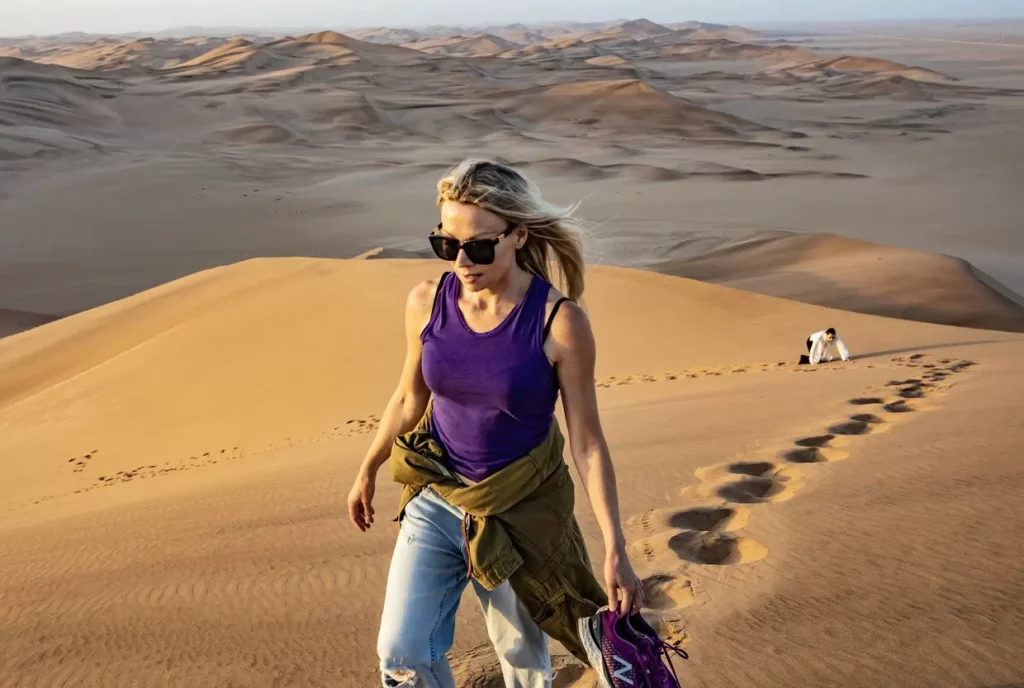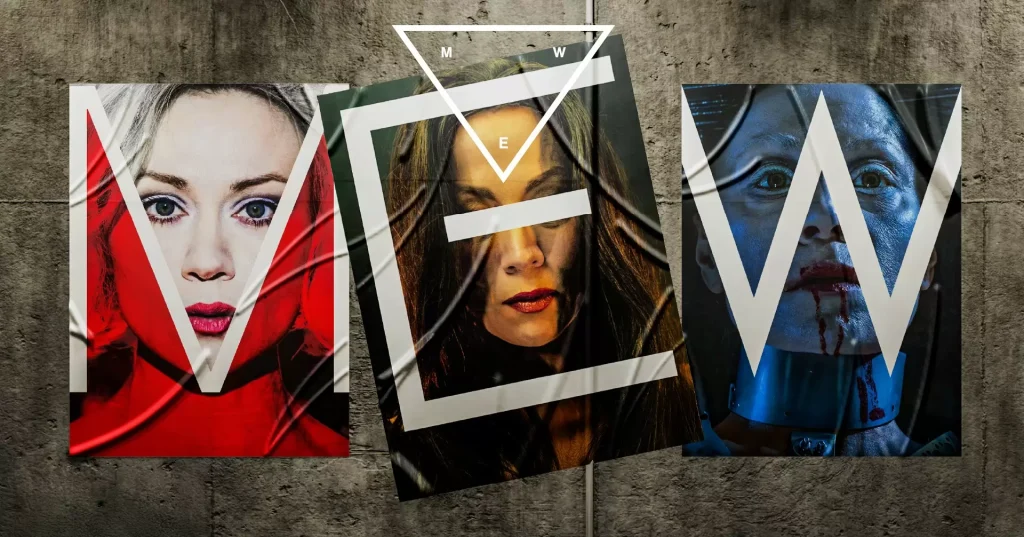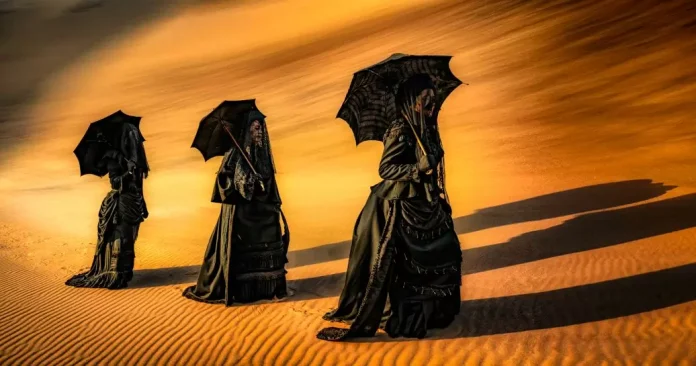Inspired by the stories of three women diagnosed with hysteria in the 19th century — Blanche Wittmann, Augustine Gleizes, and Geneviève Bazile Legrand — who were institutionalized at the Salpêtrière hospital in Paris under neurologist Jean-Martin Charcot (who categorized them by letters: W, B, G), singer, filmmaker, and visual artist Anna Eriksson set out to create a trilogy of films centered around women who could also be seen as “hysterical.”
That’s how M was born — released in 2018 at Venice Critics’ Week — inspired by the figure of Marilyn Monroe. The starting point was the book The Many Lives of Marilyn Monroe, which drove the Finnish artist to explore the intimate universe of the actress through a bold visual language, peeling back layers of fragility, pain, and sexuality. For Anna, these themes are deeply interconnected — sexuality and death walk side by side.
Looking to Monroe as a multifaceted symbol, Anna chose to portray her in a liminal state — between real and imagined — as a dark, dreamlike figure. As she put it at the time: Monroe’s presence in the film is more of a memory, an apparition, a hallucination.
Continuing to examine female figures subjected to systems of control, exploitation, and spectacle — whose bodies are pushed to the brink — Anna followed with W, which premiered at the Locarno Film Festival in 2022. Visceral and symbolic, the film imagines Europe as a dying woman — Madame Europe — ether-addicted, trapped in a metallic corset of illusion and control. In her decaying state, she maintains a sadomasochistic relationship with the Chinese man–machine, a cold, technological figure who both dominates and depends on her.
Anna rewrote W during the pandemic, letting collective fear, loss of meaning, and a crisis of values seep in. “I already had part of the story — about the nurses — but Madame Europe emerged later, during Covid. I felt something had changed. Europe changed, and we’re not going back,” she told us back in 2022. In W, Europe isn’t just sick — she pretends to be, to hide the fact that she’s already dead.
And now we arrive in 2025, back in Locarno, where the artist — who told us she spends at least three months a year in Nazaré, Portugal — is preparing to premiere the final film of the triptych.

When you began this project, did you already know it would become a trilogy? How did the concept evolve, and what was your vision for these films?
I couldn’t have predicted it. I’m not someone who plans long-term. The idea of the trilogy came from the “Just Letters” concept. At the Salpêtrière Hospital in Paris in the early 1900s, most of the patients diagnosed with hysteria were women. Three of them, treated by Dr. Charcot, were known only by letters — W, B, G. I read a book about Salpêtrière while working on M. I imagined giving other protagonists just letters too — maybe women who could also be seen as hysterical, or with similar traits. There’s a mystical aura around such figures. That’s how the idea started. When I made M, I didn’t know how many films I would create — but eventually the trilogy made perfect sense.
Now that the trilogy is complete, how would you define it?
I’d say it’s deeply tied to the feminine subconscious. Everything I used was guided by instinct, by intuition. I approached it in a very artistic way, trying to discover a new structure, a new form of cinematic seduction. What I seek in film is mystery, allure — something that puts me on edge. “What’s going on?” “I want to know more.” In M, I was searching for that; in W, I already knew what I wanted; and in E, I feel I reached the height of my style.
When we spoke in Locarno three years ago, you said anger and sadness were the emotional engines behind W. What emotion drove you to make E?
That’s a great question. Honestly, I don’t think there was a specific feeling this time. We traveled to Namibia to scout locations with an open mind. I was exhausted from W, it drained me completely. I wasn’t expecting much. But when I got there, the desert had an effect on me I can’t fully explain. Coming from post-Covid Europe, it was stunning to look out and see… nothing. There are some towns in Namibia, of course, but beyond that — just vast desert.
We went to a place called Swakopmund on the coast and began exploring. We decided to shoot in the dunes, which are extraordinary. So no, I didn’t begin with a specific emotion — but I did feel something powerful, maybe a sense of belonging. The desert clears your mind. We stayed for three months, and only after coming back did I write the story. That first trip was more of an escape from Europe.
Your films often feel like choreography, performance, dance. Do you see cinema as a form of dance?
Absolutely. Movement is very important — especially in the desert, where perfect sand conditions only allow for one take. After a scene, you either change location or wait days for the wind to erase footprints. We walked a lot searching for places. Since I’m also in front of the camera, I had to repeat scenes many times. For instance, there’s a five-minute one-take shot from above that we did over and over. I’d return to the guesthouse, watch the footage, take notes on what I did right or wrong, and then go back to reshoot. We filmed for about 100 days.
About your influences — in the past, you mentioned Pasolini, Francis Bacon, and Bergman. In E, we meet “Eva Vogler,” clearly a Bergman reference.
Yes, completely. From the start, I knew the protagonist would be named Eva Vogler, because of Persona (1966). I also knew she wouldn’t speak a single word throughout the film — only in the final scene, and even then, it’s her double who speaks. The other characters I found in Namibia as the process unfolded. It’s always like that for me — a continuous process.
The film is highly cinematic, but also feels like a painting. Were there any visual references?
Funny you ask. I actually didn’t have any direct visual references for E. The dunes were filmed very specifically. I can’t think of another film quite like it. There’s a Japanese film I love — Woman in the Dunes (1964) — but it’s very different. From the beginning, I decided not to show the sky. There’s just a tiny glimpse in the final shot, when Eva walks into the sunset. I wanted to create a claustrophobic feeling — as if only sand exists — so the viewer would be pulled fully into that world.
Your use of the body is very particular. What role does the body play in your cinema?
It’s extremely important. In this film especially, since the backdrop is just sand and the characters wear dark clothes, every movement stands out. I imagined Eva’s doppelgänger moving like an insect, gliding over the sand. There’s barely any life there — we only saw one long-legged black insect, some snakes, a few scorpions. A body in that setting becomes immediately exotic. Some scenes feel like dance, but others are intense — like when the possessed man drags a body through the sand and pushes it down a slope. We shot those scenes many times until they felt right. It was tough.
Now that the trilogy is finished, are you happy with it?
I’m very happy. What’s most wonderful is that I don’t fully understand how it all came together. When you make real art, you should reach that point of asking: “What does this have to do with me?” I worked hard, planned a lot, but in the end there’s something magical. That’s what happened with E — it has a life of its own now. It has strong energy, and you can feel that watching it with an audience. It’s as if I’m seeing it for the first time. When that happens, I think a film is truly finished. Yes, I’m very happy with the trilogy.
Once a film is out in the world, it stops being yours — it belongs to the audience. Everyone sees something different. Do you like that idea? And what comes next — is this truly the end of a chapter, or will you continue this universe?
I do think there’s continuity. I can’t abandon this universe — it’s at the core of who I am as an artist. But it also feels like the end of a chapter. Usually, by the time I finish a film, I already have the idea for the next one. Now, I have fragments of a story I want to develop. Maybe I’ll do some things differently. The people I’ve worked with have been amazing. I want to keep working that way — finding the right person for each role. I may bring in some professional actors too. But I’ll keep it small, intimate. I don’t need 20 people. I want to keep the strings in my own hands, so to speak.
Anna Eriksson: Art and Censorship

In an era of rising self-censorship and cultural control, Anna boldly affirms her vision: art cannot exist without total freedom. “If we don’t fight censorship, art will die,” she told us in 2022. A censored work, she added, “can only ever be a half-truth — and it will never reach anyone.”
Anna rejects the idea of self-censorship, both in life and in art. True art, she believes, must confront the full range of human emotion — good and evil, fear, desire, vulnerability. “If we don’t know how to live with that, then art loses its truth.” She also criticizes the hypocrisy of our times: while extreme violence is widely accepted onscreen, nudity and sex remain taboo. “You can shoot someone in the head seven times, but show a vagina and it’s a problem.”
This hypocrisy, she argues, stifles creativity and prevents powerful messages from reaching the public — especially on social media, where a single “wrong word” can get a work silenced. That’s why, in a time of cultural restraint, she insists: art must be a space of risk, not conformity.


